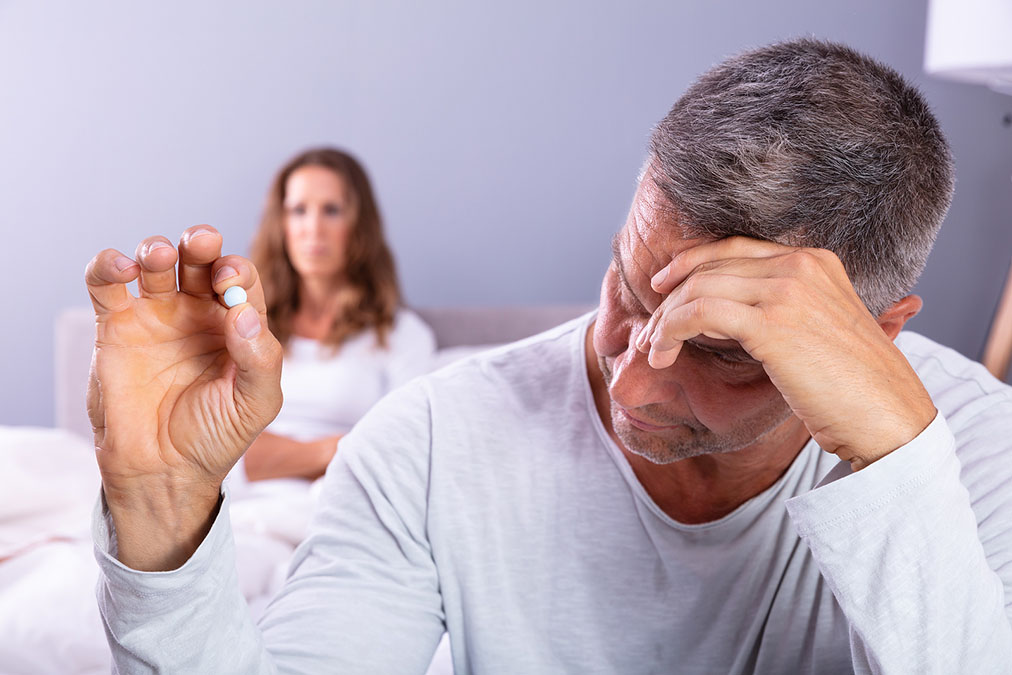 This new therapy method has become all the rage, with celebrities from Tiger Woods to the Kardashians touting it for everything from healing sports injuries to maintaining youthful-looking skin.
This new therapy method has become all the rage, with celebrities from Tiger Woods to the Kardashians touting it for everything from healing sports injuries to maintaining youthful-looking skin.
Now, before judging us at Blue Heron Health News for hitting a new low by quoting the Kardashians … the well-respected The World Journal of Urology has just published a study that examined this therapy for ED and revealed some interesting results.
PRP therapy involves taking a sample of a patient’s blood, processing it to make a rich concentrate of the platelets, and then injecting it back into the body. These platelets are rich in growth factors that promote tissue repair and improve blood flow.
The idea is that the high concentration of growth factors in the PRP will stimulate the surrounding tissues to heal faster and promote regeneration.
Since some of the causes of ED are reduced blood flow and damaged blood vessels in the penis, the authors of the new study decided to find out if PRP could treat it.
They carried out a thorough review of studies already published in medical journal databases. From 164 potentially relevant articles, 11 strong studies were selected that specifically focused on ED. Altogether, they covered a total of 1,099 patients.
Here are the main findings:
-
1. Most of the studies showed small improvements in erectile function, as measured by the International Index of Erectile Function (IIEF) questionnaire.
2. Only one study showed a large improvement in erectile function, with a nine-point improvement on the IIEF scale after six months of ongoing injections.
3. The best designed study found that PRP significantly improved erectile function scores compared to a placebo, with 76% of men on the former treatment improving by at least two points on the IIEF scale.
4. Side effects were generally mild and temporary, including minor pain or bruising at the injection site. No severe adverse events were reported.
However, there were some major limitations in the existing studies that made the authors reluctant to draw definitive conclusions.
-
1. Different studies used different methods to prepare and administer PRP, making it difficult to compare results.
2. Almost all of the studies had fewer than 30 participants, which limits the strength of their conclusions.
3. Most studies only tracked the patients for a few months, not long enough to understand any long-term effects.
4. Only a few studies compared PRP to a placebo, making it difficult to determine if improvements were due to PRP or other factors.
Therefore, the evidence on PRP therapy for ED is still evolving. It appears safe, with only mild side effects reported, and shows some small positive effects on ED. But a lot more research is needed.
In the meantime, there is a much simpler method to permanently reverse Erectile Dysfunction as soon as today. Thousands of readers have successfully used these ED home-exercises explained here…

 Overcoming IBD
Overcoming IBD Multiple Sclerosis
Multiple Sclerosis Banishing Bronchitis
Banishing Bronchitis Gum Disease Gone
Gum Disease Gone Overcoming Onychomycosis
Overcoming Onychomycosis Neuropathy No More
Neuropathy No More The Prostate Protocol
The Prostate Protocol Brain Booster
Brain Booster
 Ironbound
Ironbound
 Solution for Shingles
Solution for Shingles
 The Bone Density Solution
The Bone Density Solution
 The Ultimate Healing Protocol
The Ultimate Healing Protocol
 The Parkinson's Protocol
The Parkinson's Protocol
 The Chronic Kidney Disease Solution
The Chronic Kidney Disease Solution
 Overthrowing Anxiety
Overthrowing Anxiety The Fatty Liver Solution
The Fatty Liver Solution The Hypothyroidism Solution
The Hypothyroidism Solution
 The End of Gout
The End of Gout The Blood Pressure Program
The Blood Pressure Program
 The Oxigized Cholesterol Strategy
The Oxigized Cholesterol Strategy
 Stop Snoring And Sleep Apnea Program
Stop Snoring And Sleep Apnea Program
 The Arthritis Strategy
The Arthritis Strategy The Vertigo & Dizziness Program
The Vertigo & Dizziness Program The 3-Step Diabetes Strategy
The 3-Step Diabetes Strategy Hemorrhoids Healing Protocol
Hemorrhoids Healing Protocol The Erectile Dysfunction Master
The Erectile Dysfunction Master Weight Loss Breeze
Weight Loss Breeze The IBS Program
The IBS Program The Insomnia Program
The Insomnia Program The Migraine and Headache Program
The Migraine and Headache Program The Neck Pain Solution
The Neck Pain Solution The Menopause Solution
The Menopause Solution The Ejaculation Master
The Ejaculation Master The TMJ Solution
The TMJ Solution The Acid Reflux Solution
The Acid Reflux Solution The Fibromyalgia Solution
The Fibromyalgia Solution The Psoriasis Strategy
The Psoriasis Strategy